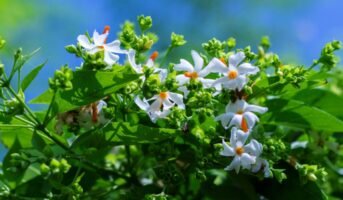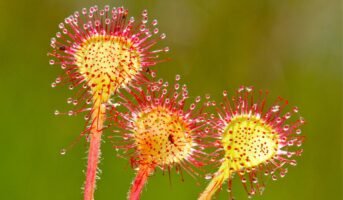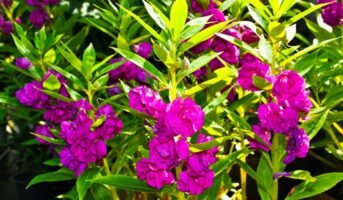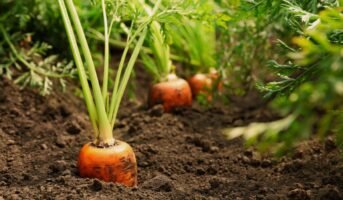Indoor spaces frequently desire a touch of nature, with green plants providing life and calm. However, not every space receives enough sunlight. That is where certain indoor plants come in, as they require very little sunlight! These plants not only beautify your home, but also purify the air, making it healthier to breathe. In this article, we’ll look at ten indoor plants that thrive without direct sunlight, allowing you to create a lush and inviting indoor environment.
See also: Top 10 artificial plants for home decor
Snake plant (Sansevieria Trifasciata)
Sansevieria Trifasciata, commonly known as the snake plant, is frequently referred to as the “indestructible plant” due to its extreme toughness and low maintenance requirements. It has a cool, architectural appearance that adds style to any room. This plant can tolerate low light conditions, so it is fine if your room does not receive much sunlight. Not only that, but it doesn’t require much watering, and it’s okay if you ignore it for a bit. The snake plant will grow back even if you ignore it. With its durability and low-maintenance requirements, it’s an excellent choice for anyone looking to add some greenery to their home without much effort.

Source: Pinterest
Bird’s nest fern (Asplenium Nidus)
Scientifically known as Asplenium Nidus, the Bird’s Nest Fern is a stunning plant with lush, green fronds that form a rosette shape. It’s a true beauty. This fern is ideal for areas of your house that don’t receive a lot of sunlight because it prefers medium to low light. When it comes to watering, keep the soil moist but not saturated. With its stunning appearance and laid-back personality, the Bird’s Nest Fern is an excellent choice for adding a touch of natural elegance to your home.
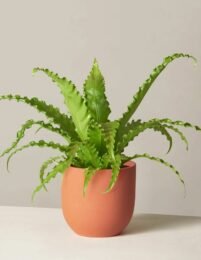
Source: Pinterest
Cast iron plant (Aspidistra Elatior)
The Cast Iron Plant, or Aspidistra Elatior, lives up to its name by being extremely tough and resilient. This plant can tolerate neglect, so it’s fine if you forget to water it or give it little attention. It will also flourish in areas where other plants might struggle because it is completely tolerant of low light levels. And don’t worry if your home gets a little chilly—the cast iron plant can handle that too. With its ability to withstand neglect, low light, and cold temperatures, this plant is an excellent choice for any indoor space.

Source: Pinterest
Staghorn fern (Platycerium)
Platycerium, commonly known as the Staghorn Fern, is an eye-catching architectural plant with leathery fronds that mimic a stag’s antlers. Because these ferns do well in diffuse light, they are ideal for areas that do not get direct sunlight. Furthermore, they prefer high humidity, so mist them frequently or keep them in a humid environment, such as a bathroom. The Staghorn Fern, with its distinctive appearance and specific light and humidity requirements, adds a touch of natural elegance to any interior setting.
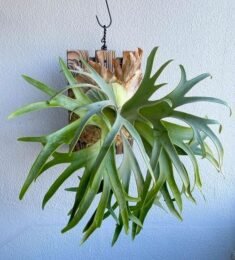
Source: Pinterest
Peace lily (Spathiphyllum)
The graceful plant known as Peace Lily, or Spathiphyllum, is valued for both its air-purifying properties and its exquisite white, spathe-like flowers. It’s like having a natural air freshener at home. This plant prefers medium to low light conditions, making it ideal for areas with limited sunlight. One of the coolest things about the Peace Lily is that it’s a little dramatic—when it’s thirsty, it droops dramatically, giving you a clear indication that it needs water. The Peace Lily is an excellent addition to any indoor space, thanks to its beautiful flowers, air-purifying properties, and ease of maintenance.
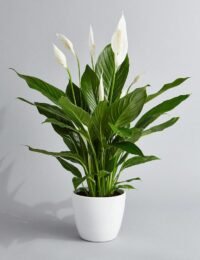
Source: Pinterest
Prayer plant (Maranta Leuconeura)
The Prayer Plant, also known as Maranta Leuconeura, is a fascinating species with leaves that fold upward at night, similar to prayer hands. Because they do well in medium to low light, these plants are perfect for locations that receive less sunlight. Furthermore, they prefer high humidity, so mist them frequently or keep them in a humid environment, such as a bathroom. Prayer Plants, with their distinct leaf movements and light and humidity preferences, add a sense of wonder and beauty to any space within the home.

Source: Pinterest
Pothos (Epipremnum Aureum)
A popular trailing plant that is nearly unbreakable is pothos, also known by its scientific name, Epipremnum Aureum. Pothos is adaptable in low light conditions, making it ideal for places in your home that do not receive much sunlight. Moreover, Pothos is very tolerant of overwatering or forgetting to water it; it can withstand both situations. Even if you neglect it occasionally, this hardy plant will continue to thrive. Pothos, with its versatility and resilience, is an excellent choice for adding greenery to your home with little effort.
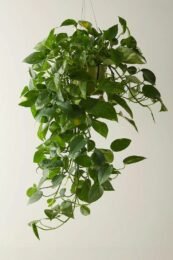
Source: Pinterest
Philodendron
Philodendrons are a diverse group of plants with trailing, climbing, and upright varieties to fit any environment. These plants are relatively relaxed and can tolerate low light levels, making them ideal for areas with limited sunlight. But they could become long and lanky if they don’t receive enough light. To keep them looking their best, it’s a good idea to expose them to some sunlight every now and then. Philodendrons are excellent choices for adding greenery to your home decor due to their adaptability and comfortable nature.
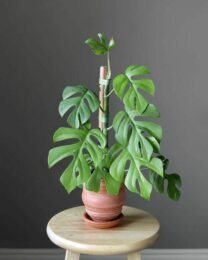
Source: Pinterest
English ivy (Hedera Helix)
English ivy, scientifically known as Hedera helix, is a classic climbing vine that adds a whimsical touch to any setting. This plant thrives in low-light environments, making it ideal for locations with limited sunlight. Additionally, English Ivy prefers moist soil, so water it regularly to keep it happy. With its classic charm and low-maintenance requirements, English Ivy is an excellent choice for adding greenery and magic to your home decor.
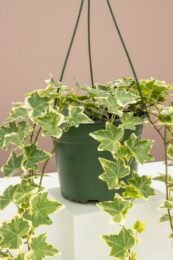
Source: Pinterest
Bromeliad (Bromeliaceae)
Bromeliads, part of the Bromeliaceae family, are colorful and exotic plants that come in a variety of shapes and sizes. Perfect for places that don’t get direct sunlight, these plants flourish in diffused sunlight. Bromeliads also prefer well-drained soil, so ensure that their pot has adequate drainage to keep their roots healthy. Bromeliads, with their vibrant colors and preference for indirect light and well-drained soil, will add a touch of tropical beauty to your indoor oasis.
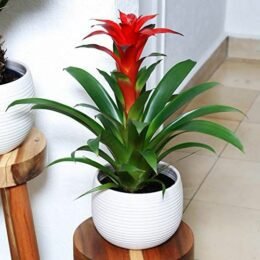
Source: Pinterest
FAQs
No, all plants need some light for photosynthesis. However, many plants can thrive in low-light conditions (indirect light or fluorescent light).
Snake plants, ZZ plants, and cast iron plants are known for their resilience and ability to tolerate neglect and low light.
Yes, but less frequently than plants in full sun. Overwatering is a bigger risk for low-light plants, so let the soil dry out slightly between waterings.
Leggy growth (stretching towards light), leaf drop, and lack of new growth are all signs your plant might need more light.
Peace lilies and some varieties of bromeliad can flower in low-light conditions.
A pot with good drainage is essential to prevent root rot from overwatering. Clay pots are a good option as they allow the soil to breathe.
Grouping plants together, placing them on a pebble tray with water, or using a humidifier can all help raise humidity levels.
Yes, fluorescent lights can be used to supplement natural light for low-light plants.
Even low-light plants will grow towards any light source. Rotating them occasionally will help them grow more evenly.
While some low-light plants are generally considered non-toxic, it's always best to research a specific plant before bringing it into a pet-friendly home. Can any houseplant truly survive in no sunlight?
What are the easiest low-light plants to care for?
Do low-light plants still need watering?
What signs indicate a low-light plant isn't getting enough light?
Are there any flowering plants that don't need much sun?
What kind of pot is best for low-light plants?
How can I increase the humidity for my low-light plants?
Is it okay to use artificial lights for low-light plants?
How often should I rotate my low-light plants?
Is it safe to keep low-toxic plants in a room with pets?
| Got any questions or point of view on our article? We would love to hear from you. Write to our Editor-in-Chief Jhumur Ghosh at jhumur.ghosh1@housing.com |

Sanskrati Gupta is an economics major currently pursuing her studies at Delhi University. She likes to explore world topics and share her thoughts and analysis through her writing.


